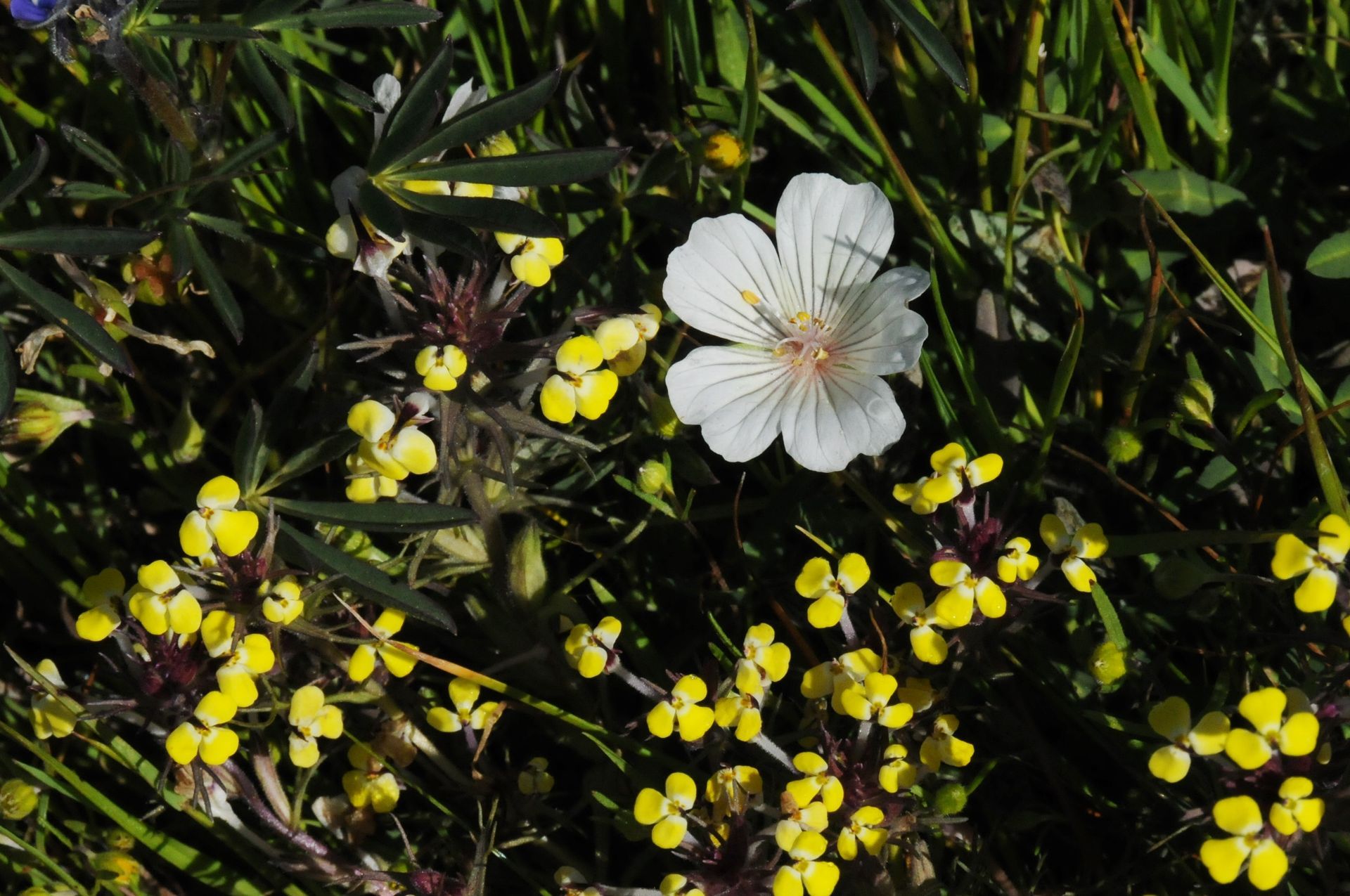Tuleyome's Science Corner: A Bit About Wetlands

Meadowfoam (Limnanthes douglasii) and Butter & Eggs (Triphysaria eriantha) are two wildflowers found in vernal pools
Often categorized with coral reefs and rainforests, wetlands are one of the most productive ecosystems in the world. Not only do they provide food and shelter for countless species ranging from invertebrates to humans; but wetland plants and soils also function as biological filters that purify the surface water. They do this by removing destructively high levels of nitrogen and phosphorus before it percolates back into underground aquifers. Ducks Unlimited has documented that some wetland plants have shown to have heavy metal concentrations 100,000 times higher than found in the surrounding water.
And speaking of underground water storage, many wetlands are directly responsible for recharging the water stored underground which is used for drinking and crop irrigation. Wetlands also function as flood control. A recent study found that one acre of wetland can store over 1.5 million gallons of water. Inland wetlands such as seasonal and perennial ponds, and vernal pools and swales breakup and slow down surface flow reducing the severity of flash floods as well as aiding in decreasing the effects of drought.
Wetland soils are unique themselves. The texture, composition and color differ from the surrounding upland soils because of the anaerobic conditions and components that make up the wetland soil. One of the most highly specialized, strikingly beautiful and unfortunately rare types of wetlands in California are vernal pools. Vernal (which means “spring” in latin) pools are depressions that occur most commonly in clay soils. Vernal pools have three seasons: wet, flowering and dry. During the rainy season, the pools fill and hold water through the wet weather. As rainfall decreases and temperatures increase, the water level begins to decline. This is when the specially-adapted plants, most of which are native, begin to flower often resulting in stunning concentric rings of color. As the water evaporates and the soils dry out, the plants die but their seeds are ready and waiting for the next wet season to begin.
Fairy shrimp are invertebrates that also inhabit vernal pools. Most of their activity happens while the pool is still ponded and some species can complete their life cycles in as few as 16 days! Fairy shrimp cysts, embryos encased in hard shells, are designed to survive drought and can lay in the cracked, desiccated bottom of vernal pools for over one hundred years waiting for the perfect conditions to reoccur. If those conditions, usually a combination of ponding depth and duration, temperature and water quality occur, young fairy shrimp emerge and eventually mate resulting in more cysts and future fairy shrimp populations. California is home to several species of fairy shrimp, unfortunately most of them are listed as threatened or endangered due to habitat destruction.
Since about the mid 1800’s, California has lost roughly 95% of the documented historic four million acres of wetlands. Less than 200 years ago, much of the Valley was covered with what is known as Tulare Lake, an inland freshwater lake fed by rain fall and snow melt. Once one of the largest freshwater lakes in the United States, its marshy edges were lined with cattails, tules and other wetland and riparian vegetation. The lake and its extensive marshes supported the Yokuts with materials and food including tule, fish, deer and elk for centuries and was an important stop-over for thousands of migrating birds along the Pacific Flyway.
Over time, the lake and associated wetland areas were altered in order to farm the fertile soil beneath the water and build cities and towns. Historically, seasonal flood events had doused the surrounding land with fertile river sediments. Gold mining and associated activities left sediment deposits about a mile wide and three feet thick at some locations in the Valley, blocking the drainages and channels that moved and circulated the water; literally raising the level of the land.
Today, only five percent or so of wetlands that remain intact are protected by law although they face threats from development, climate change, and drought. Education and awareness have helped raise public appreciation for wetland habitats which in turn helps the species that rely on them for part or their entire life cycle. In addition to preservation, wetland construction has also added to the inventory of functioning, healthy wetlands in California.
Did you know that the Woodland Regional Park Preserve has naturally occurring vernal pools as well as restored and constructed seasonal and perennial wetlands? The seasonal and perennial wetlands are in the process of being populated by both wildlife and vegetation. If you’d like to see the establishment of a wetland and help us document the prosperity and popularity, please let us know. The WRPP will be opening to the public soon but if you just can’t wait that long, visit our website or give us a call to schedule a tour of the park preserve. We can’t wait to show you what we and our partners have done!
-Kristie Ehrhardt; kehrhardt@tuleyome.org
Tuleyome Land Conservation Program Manager
RECENT ARTICLES






